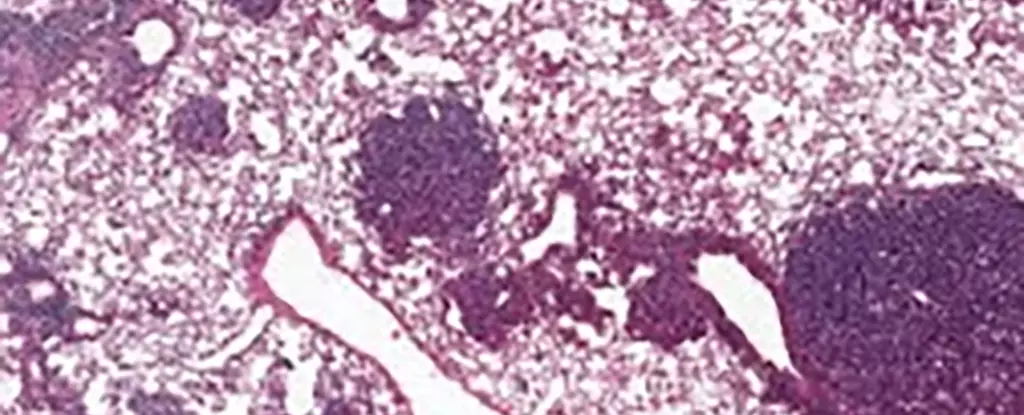Aging is a double-edged sword when it comes to cancer risk. For many, the years beyond 60 mark a rising tide of vulnerability to various forms of this disease, a trend sharply driven by the accumulation of genetic mutations. Yet intriguingly, cancer risk tends to decline once an individual crosses the age of 80. A recent study shedding light on this paradox has unveiled important insights into the cellular mechanics of aging and its impact on lung cancer.
Understanding the Role of AT2 Stem Cells
The pivotal study examined the behavior of alveolar type 2 (AT2) stem cells in mice, which are crucial for lung repair and regeneration. This focus was particularly insightful because AT2 cells are often the initiation point for many lung cancer developments. Researchers discovered an increase in levels of a specific protein called NUPR1 in older mouse models. This protein alteration was intriguing as it seemed to rewire how these cells interact with iron metabolism—behaving as if they were deficient in iron, despite actually having more of it.
According to Xueqian Zhuang, a cancer biologist at Memorial Sloan Kettering Cancer Center, aging cells exhibit diminished regenerative capacity. This shift plays a critical role in limiting not only healthy cellular growth but also the unchecked proliferation that characterizes cancerous cells. The disconnect between iron levels and functional capability raises questions about underlying biological mechanisms that remain to be fully elucidated.
Human Implications and the Role of Iron
Interestingly, this cellular behavior is not confined to mice alone; similar patterns were noted in human cells during the study. The elevated NUPR1 levels corresponded with a reduction in available iron for cellular processes. The nuances of this finding are particularly compelling: when researchers modified NUPR1 levels or increased iron artificially, they observed a stimulation in the growth of these cells.
This discovery opens avenues for potential therapeutic strategies that target iron metabolism, particularly relevant for older adults who may be grappling with the long-term consequences of illnesses like COVID-19. Understanding how to manipulate iron availability could hold the key to improving lung function and possibly staving off cancer’s onset in older populations.
Ferroptosis and Cancer Treatment Considerations
The implications of this study extend to cancer treatment strategies as well. Ferroptosis, a type of cell death triggered by iron, is gaining traction as a potential cancer therapy. However, the study suggests that the very nature of aging modifies the efficacy of treatment options such as these. Results indicated that older cells exhibit a functional deficiency in iron, which may provide them with a protective layer against therapies relying on ferroptosis. Consequently, bringing ferropotic treatment to patients at earlier stages of their cancer journey may yield better outcomes and efficacy.
Beyond treatment implications, the findings prompt a reevaluation of cancer prevention strategies, particularly during youth. With the data suggesting that cancerous developments fueled by youthful exposure to carcinogens, such as tobacco or UV radiation, may pose a greater threat, emphasis on prevention becomes paramount. Scientists like Tuomas Tammela advocate for public health initiatives focused on minimizing harmful exposure during formative years, as interventions at this stage may offer superior protective benefits.
This research contributes to a broader understanding of how aging influences cancer biology, highlighting the importance of tailoring treatment strategies based on individual factors such as age and underlying health conditions. The more personalized these treatment regimens can be, factoring in the complexities introduced by aging, the more likely they are to succeed in combating the disease.
As we deepen our understanding of how aging shapes cancer risk and treatment response, significant strides can be made in both prevention and therapeutic strategies. While the complexities of NUPR1 and its implications for stem cell function require further investigation, these findings underscore an innovative shift in how we approach cancer throughout the life span, particularly among the aging population. Emphasizing prevention in youth and developing nuanced treatment options will be critical in the ongoing fight against cancer.

